If you’re just starting a YouTube channel to share your gaming videos or want to start podcasting, you must choose your audio gear carefully. For your audience to be able to enjoy your videos, the sound coming from an old muffled headset won’t be enough. At the same time, if you’re not yet making money from your channel/blog/podcast, spending $100+ on a Blue Yeti might not be viable.
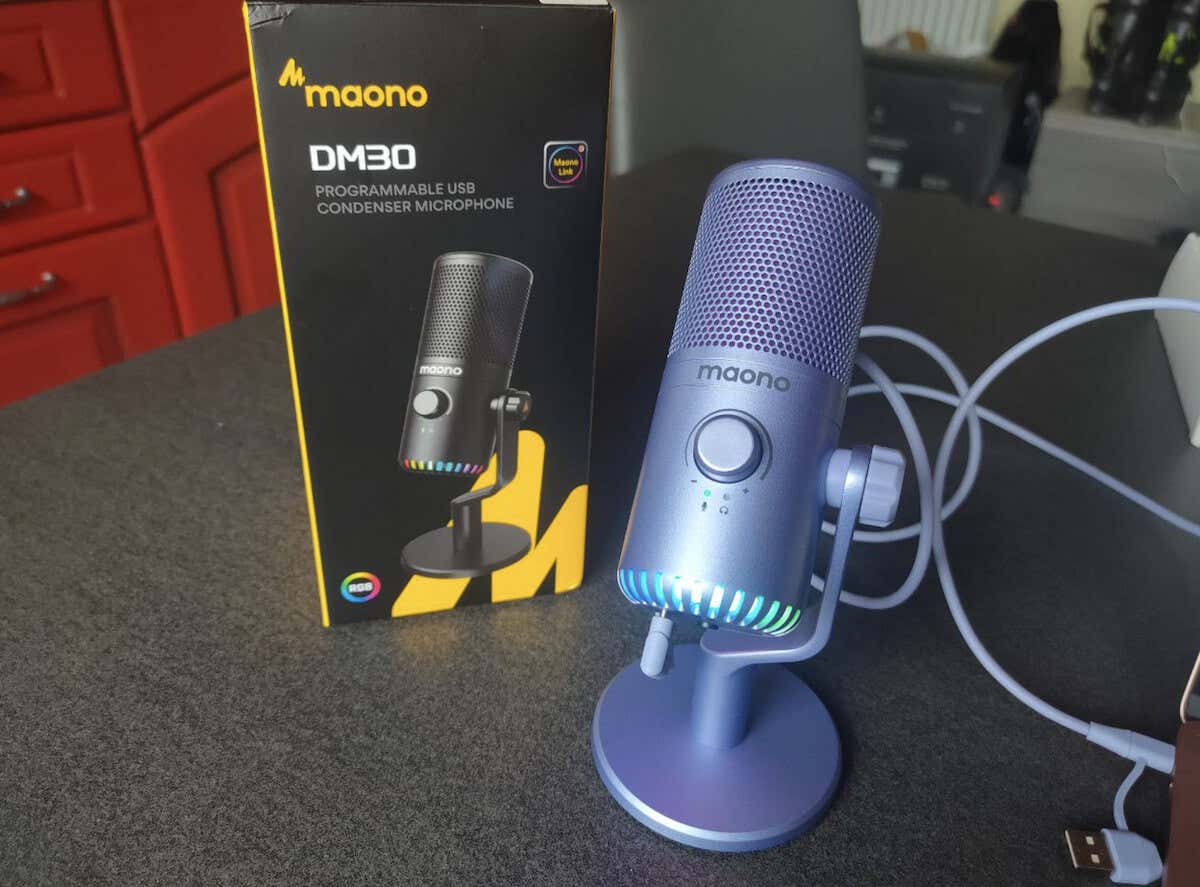
Maono created a budget-friendly condenser microphone that could be the answer to your prayers. Check out our Maono DM30 Microphone review to see whether you should buy it as your next USB condenser mic.
Table of Contents
Maono DM30 Programmable USB Condenser Microphone: First Impressions & Specs
If you’re looking for a budget USB microphone to complete your setup but are confused by the diversity of options available, you want to get the best value for your money. The DM30 seems like a suitable option here, as it comes with promising gaming mic specs while not breaking your bank at under $50 (even under $35 if you manage to catch a sale on Amazon).
The DM30 is marketed as a gaming microphone and would be an excellent choice for live streaming your game sessions on Twitch or Discord. However, if you’re looking for a mic to do podcasting or any other work in your home studio, that shouldn’t discourage you from picking the DM30.
This mic comes with a professional sound chipset to ensure great sound quality, high-sensitivity cardioid pickup, good durability thanks to the high-quality metal and plastic materials used to make it, and RGB lighting with different modes that you can control via a physical button on the mic or the Maono Link app.
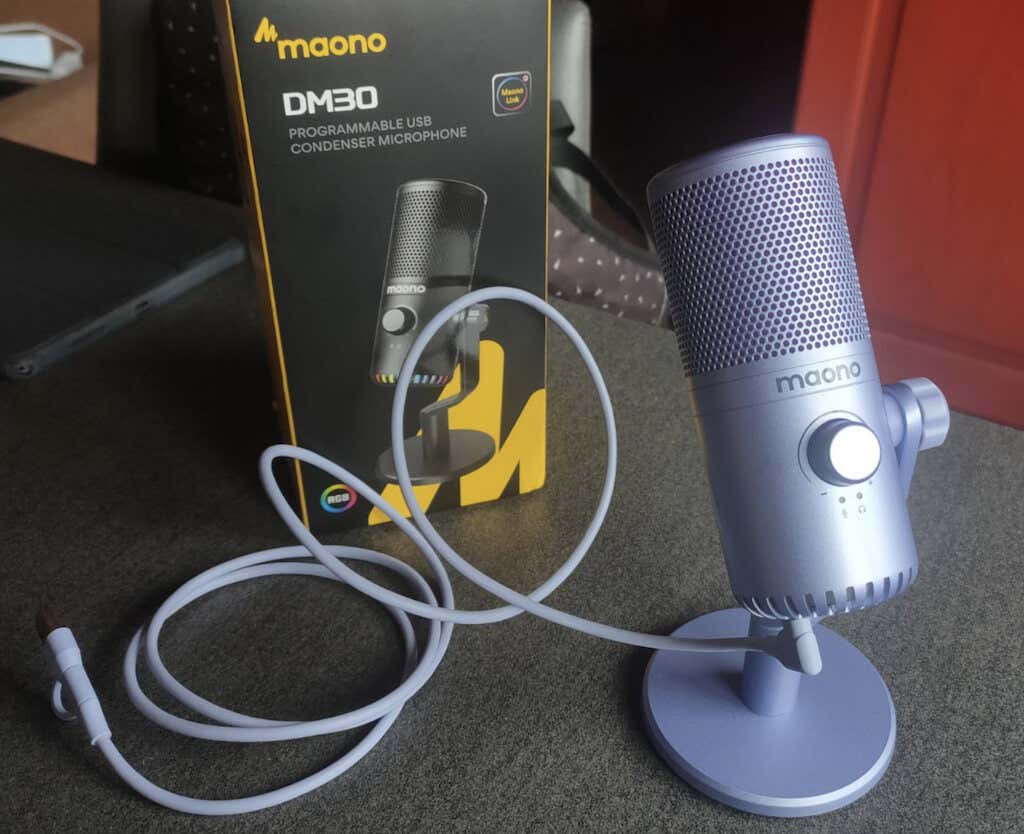
Honestly, all of that sounds like more than you’d expect to get with such a price tag. Before we dive into our review of the Maono DM30, here’s the complete list of tech specs of this USB condenser mic:
- Weight: 16.9 oz (480g)
- Pickup device type: condenser
- Polar pattern: cardioid
- Connectivity: USB 2.0, USB type-C, 3.5mm headphone jack
- Sensitivity: -4dBFS (1V/PA at 1 kHz)
- Frequency response: 20Hz – 20kHz
- Compatibility: Windows, macOS, Linux
- RGB modes: 7 solid colors + rainbow effect
- Color: black, purple, pink, white
- Price: from $33.59 (on sale) on Amazon or $49.99 on the Maono website.
Design and Unpacking
Typically, you wouldn’t expect much in terms of design and build quality from a budget microphone. You’ll be pleasantly surprised to learn that the Maono DM30 went the other way and really focused on both those areas. While the mic follows the standard simple shape, Maono managed to make it look stylish and, dare I say, quirky, especially if you choose one of the colorful options – white, pink, or purple (I had the DM30 in purple color for testing).
What’s in the Box
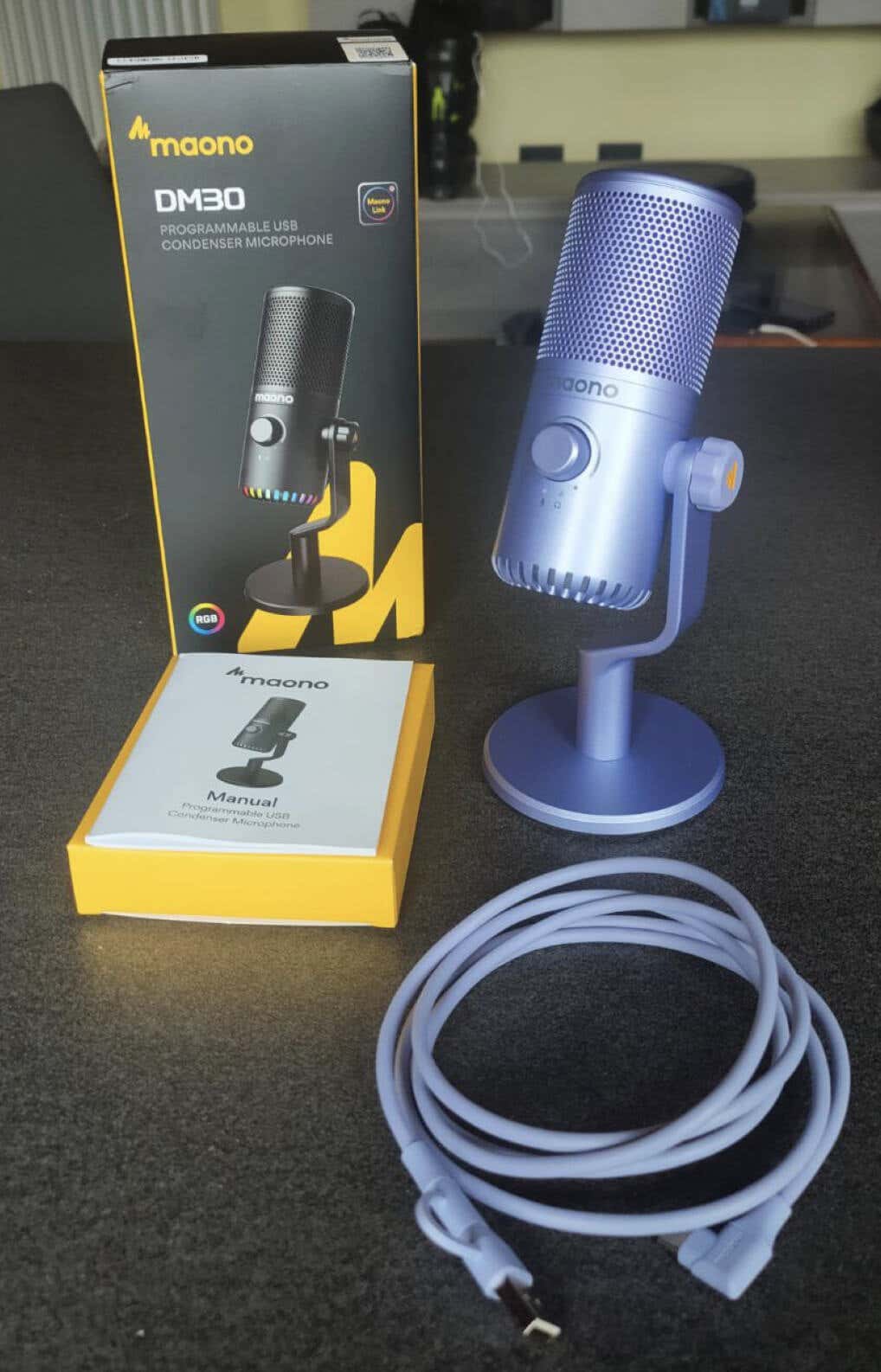
Here’s everything you’ll find during the Maono DM30 unboxing experience:
- Maono DM30 Programmable USB Condenser Microphone
- USB-A to USB-C cable
- Desktop stand
- Use Manual
The build quality is quite impressive. The mic is relatively light, but the metal stand is solid and surprisingly heavy (so you don’t have to worry about accidentally knocking it over). The stand also has adhesives on the bottom if you want to mount the base of your mic onto your computer desk more permanently.
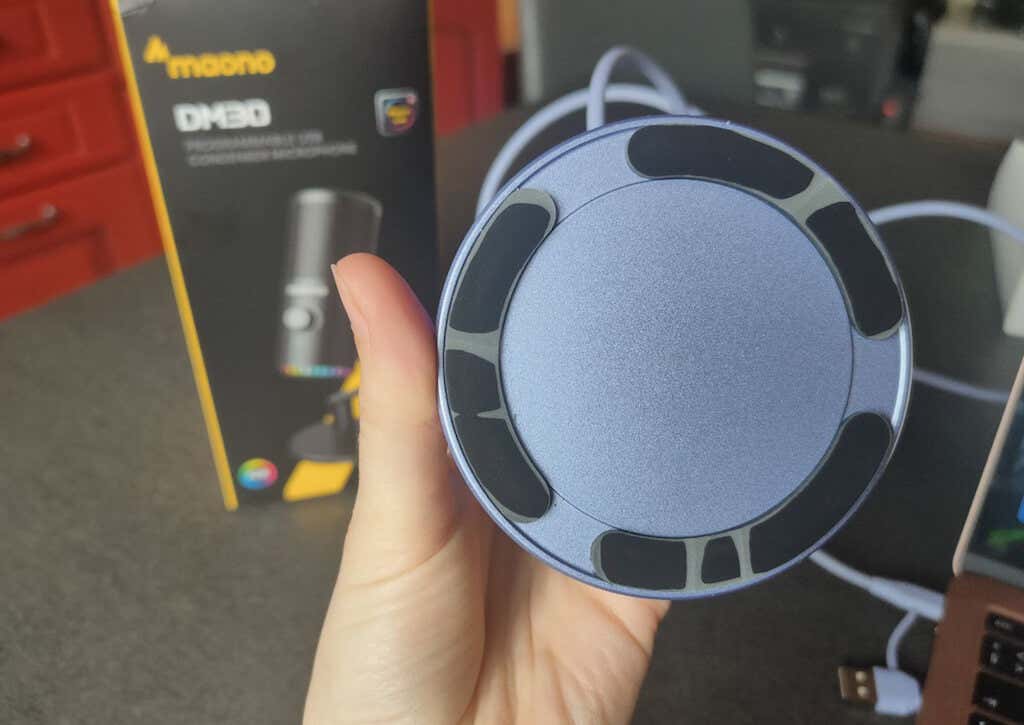
Thanks to the flexible knob on the side of the mic, the stand is adjustable and allows you to rotate your mic up to 300 degrees to accommodate a big range of motion.
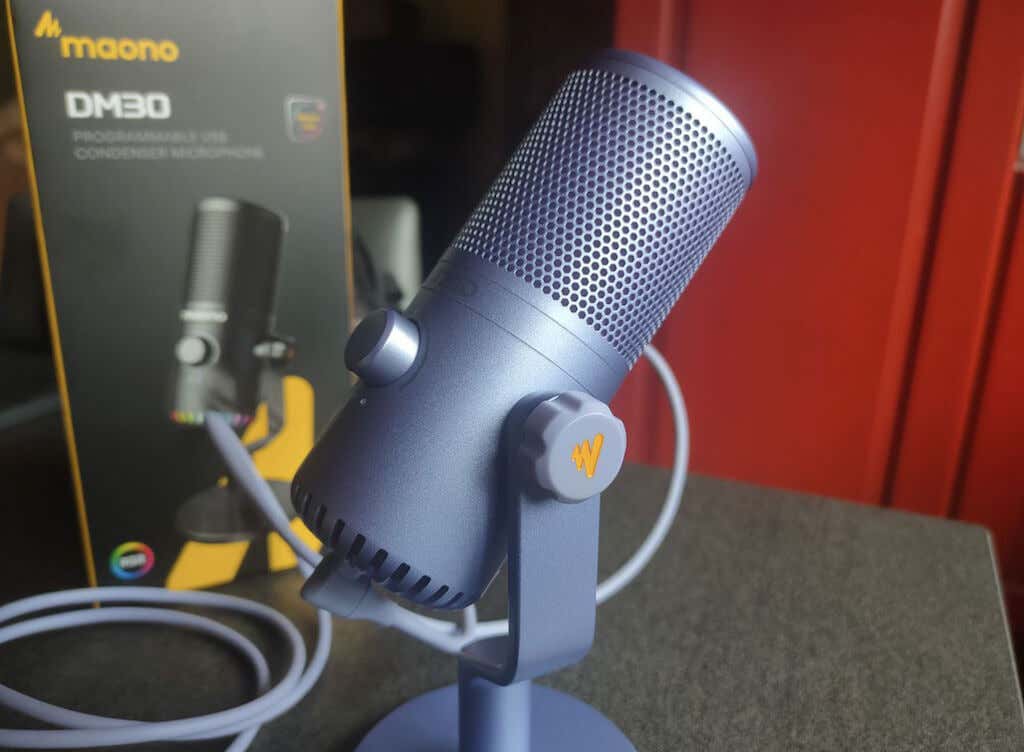
If you want more control over your microphone’s position, you can purchase a boom arm stand separately. Some also let you hide the cables by placing them inside the cantilever frame to avoid dangling. You can then mount your DM30 on the boom arm by removing the bottom part of the mic’s all-metal base and using the screw hole on the bottom of it.
Maono has built the peripheral almost entirely of metal, except for the plastic top and buttons. The main button is the knob on the front of the mic – the headphone volume button. Aside from volume control, it functions as a mute button and allows for microphone gain control adjustment. Underneath the button are two LED lights, one for the microphone, which turns green when you plug in your mic and turns red when the mic is on mute, and one for the headphones, which is always off unless you plug in a headset.
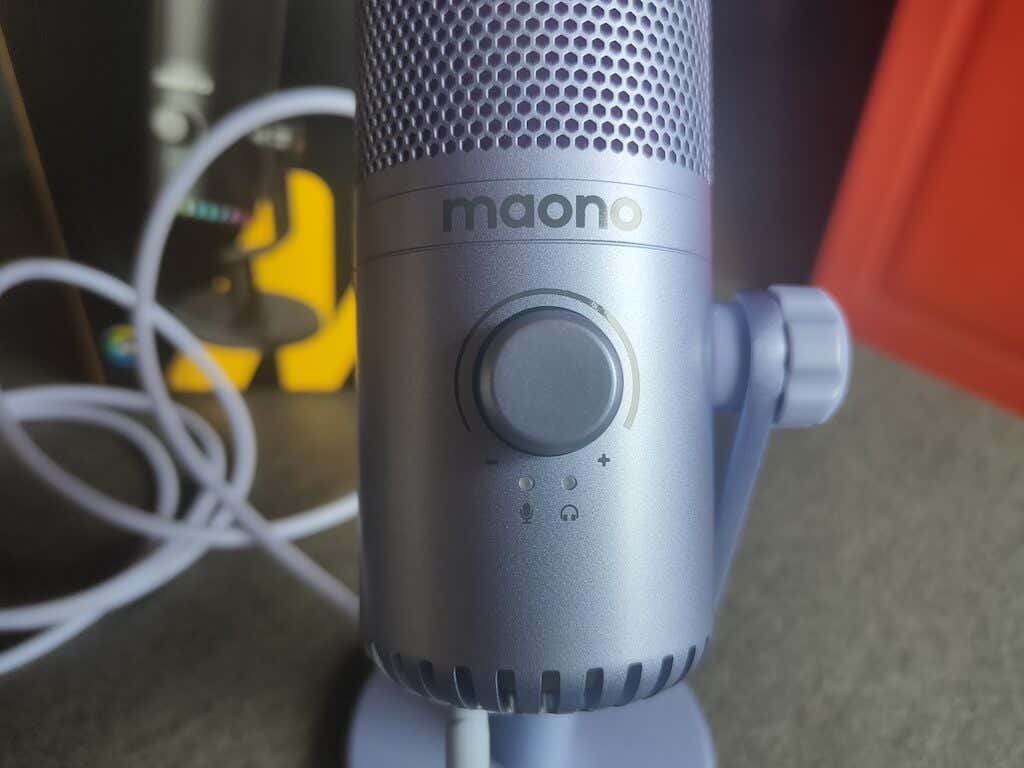
On the bottom of the mic, you’ll find a USB-C port, a 3.5mm jack, and a button to control the RGB lighting. The USB cable that comes with the DM30 is a two-in-one USB-C and USB-A cable which comes in handy when you need to use the mic for recording on different devices, like a smartphone with a USB-C port or a computer with USB-A ports only. The headphone jack lets you connect your headphones for real-time monitoring of what the DM30 captures.
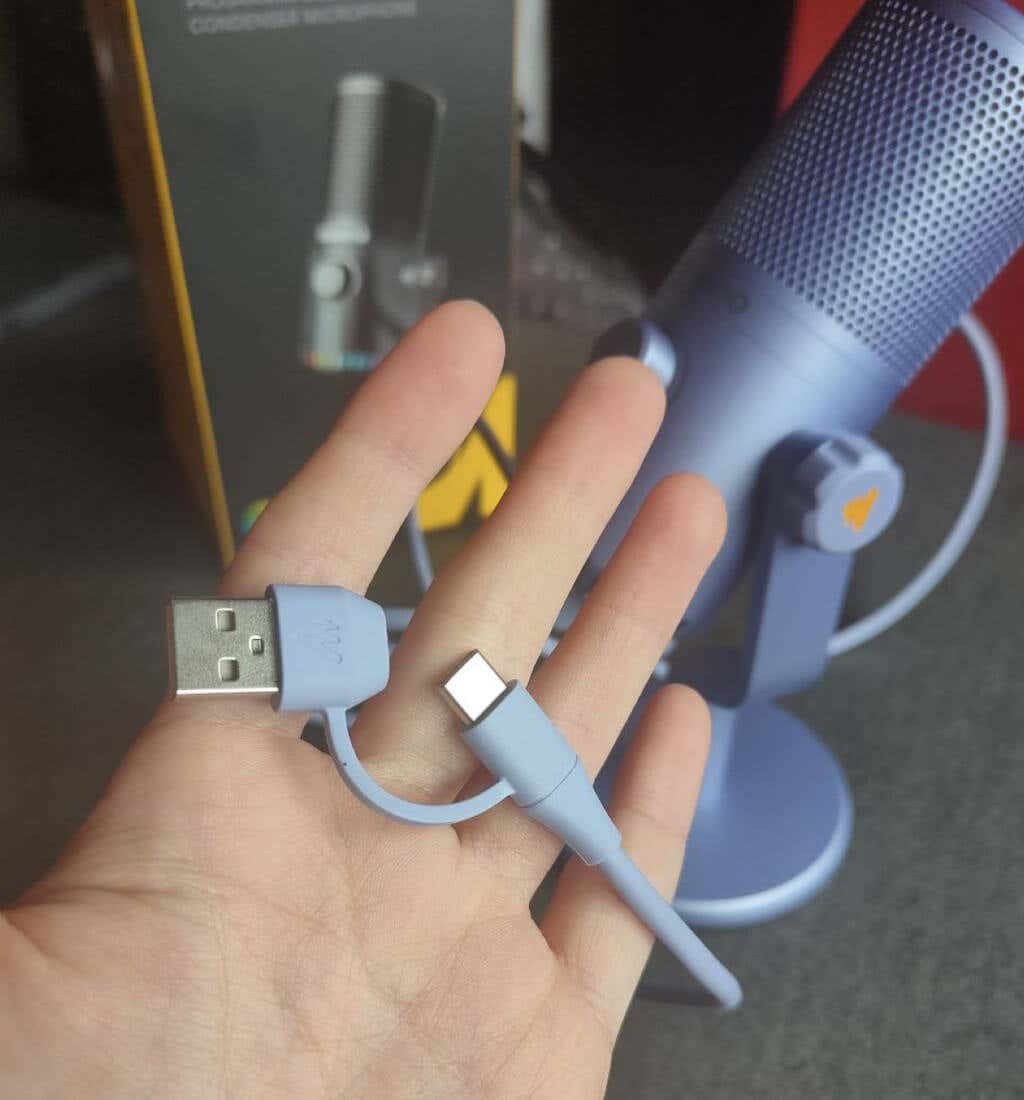
The bottom of the DM30 has an array of holes for the RGB lights. There are 9 RGB lighting modes you can choose from: red, orange, yellow, green, cyan, blue, purple, rainbow loop, and off. The rainbow mode is just a loop, there are no fancy effects like Breathe or Strobe. You can switch the modes using the physical button on the bottom of the mic or via the Maono software.
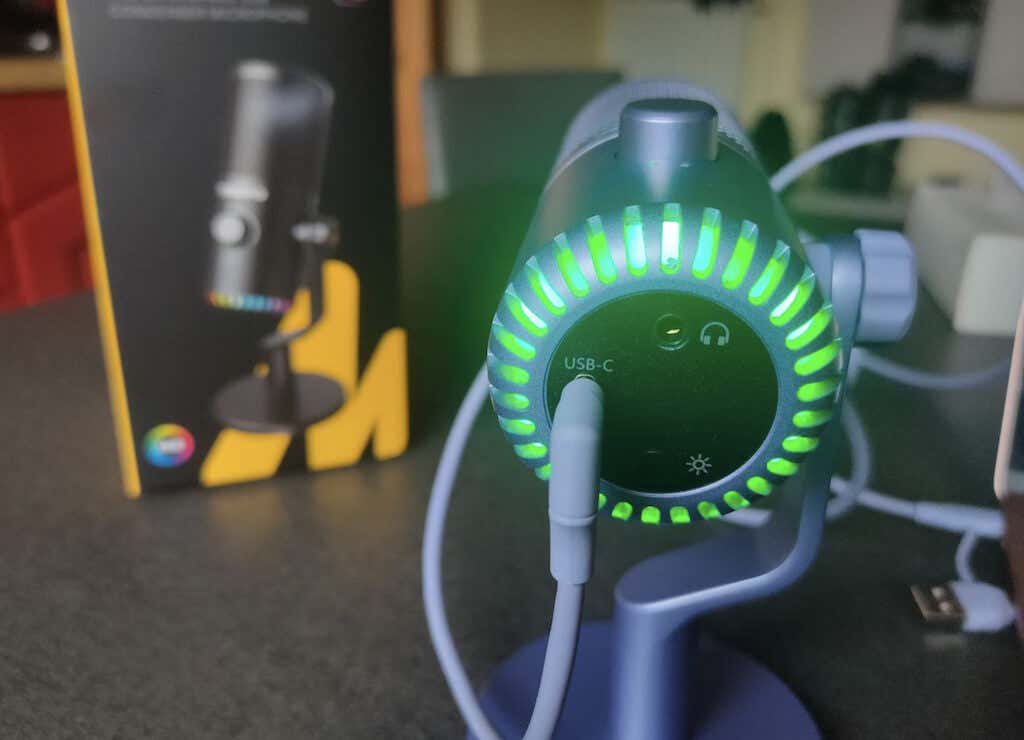
If you want to create a more colorful atmosphere on your computer desk, check out the Maono DM30RGB mic. It’s a similar model that comes with more RGB lighting – not only the bottom but the mic’s body lights up as well.
Audio Quality & Features
Maono DM30 is extremely easy to set up with plug-and-play connectivity. I tested the microphone with my Mac and an Android smartphone. Maono DM30 delivers great sound quality for its price. You can expect your voice to sound clear on your recordings even if you move away from the mic slightly while recording.
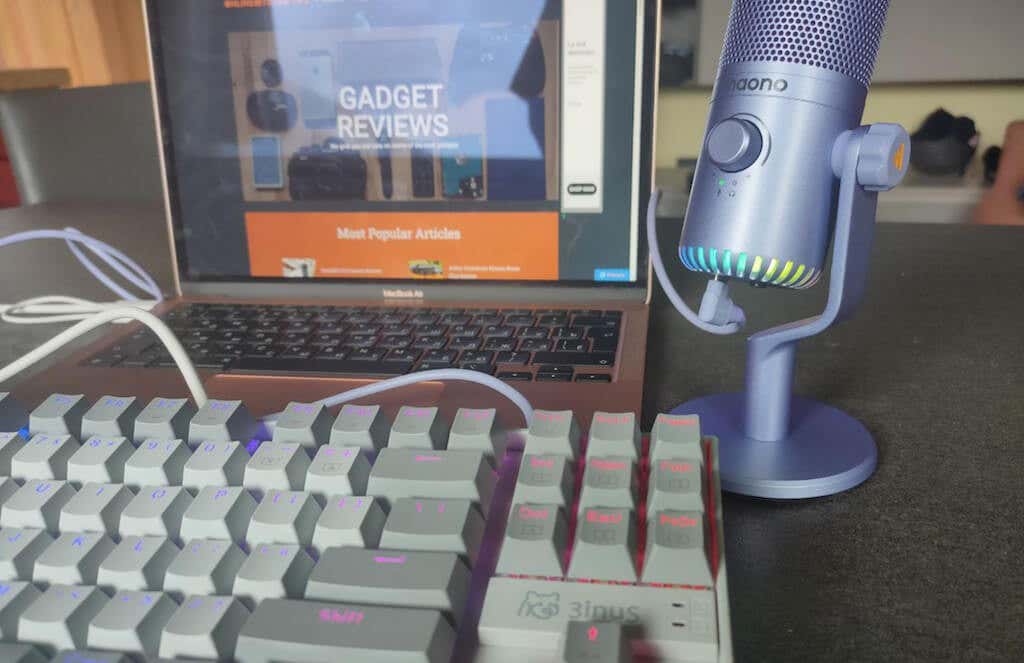
The microphone captures a lot of detail, making the DM30 an excellent option for recording your singing or playing musical instruments. Besides, you can use the Maono Link app to tweak the audio settings and make your voice sound deeper by switching the preset sound modes. The DM30 would do well as a podcasting mic, as it makes your voice sound crisp and clear.
The mic has a cardioid polar pattern and is directionally sensitive, which is most important if you’re a gamer or a streamer. This means the DM30 picks up sounds in a heart-shaped pattern in front of the microphone, effectively filtering out the background noises that can be heard at a distance. However, if you put the mic directly on your desk and use it while gaming, it’s likely to pick up those keyboard and mouse clicks. If that’s the case, consider investing in a boom arm to place your mic over the desk rather than on top.
The DM30 has a high-sensitivity condenser microphone core with a sampling rate of 24-bit/48 kHZ. This allows you to get good audio recordings even if you don’t sit close to the microphone.
App and Compatibility
Maono DM30 is a plug-and-play microphone, so it’s ready to use as soon as you plug it in. However, if you want to get access to more advanced customization options, you can download the Maono Link software from the company’s website and install it on your device.
In the app, you can access the full capabilities of the microphone. The app’s interface is divided into two areas: Standard and Advanced. The Standard tab has some basic mic controls, while the Advanced allows you to tweak the rest of the microphone’s settings. There’s also a section that allows you to change the RGB lighting regimes. There’s a toggle that allows you to switch the RGB on and off, a section to choose the color, and an option to set the Lamplight Brightness.
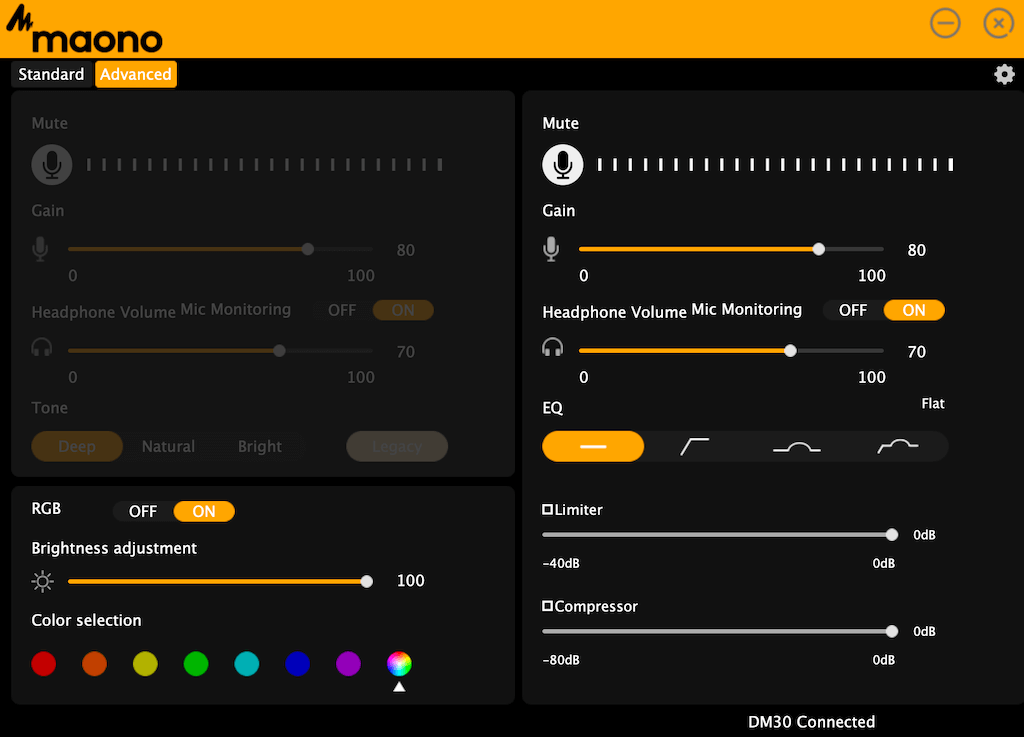
Under the Standard tab, you get the microphone gain control, the headphone monitor, and the headphone volume control – all of the functions you can manually control using the buttons on the mic’s body. The interesting feature is the tone change. You can choose from 4 presets: Deep, Natural, Bright, and Legacy. You can test all four until you’ve found your perfect voice settings. I personally prefer the Deep setting, as it makes my voice carry more weight and sound less bubbly.
When you go to the Advanced tab, you’ll find all the same controls plus a few more for further customization of your audio recordings. There’s an equalizer that allows you to choose from four different presets: one for flat sound, one with a high-pass filter, one for boosting the mid-range presence, and a combination of the two middle options. There’s no option to create your own custom EQ preset. In this tab, you’ll also find advanced options to tweak your audio input, like the Limiter and Compressor controls.
Should You Buy the Maono DM30 USB Microphone?
The DM30 isn’t the first microphone I tested. I previously reviewed the Maono WM821 and was impressed by how much Maono managed to pack into their dual wireless mic system. While the DM30 is an impressive USB microphone, I wouldn’t recommend it for professionals looking for a premium-grade peripheral due to its lacking advanced audio features.
At the same time, the Maono DM30 is one of the best entry-level microphones currently on the market, and it’s a steal for anyone looking to buy a budget microphone.
